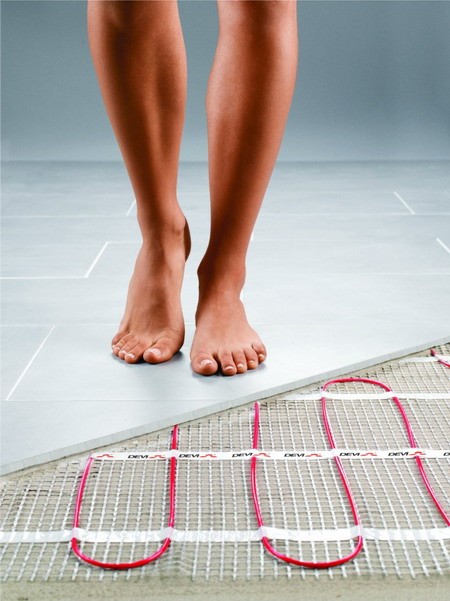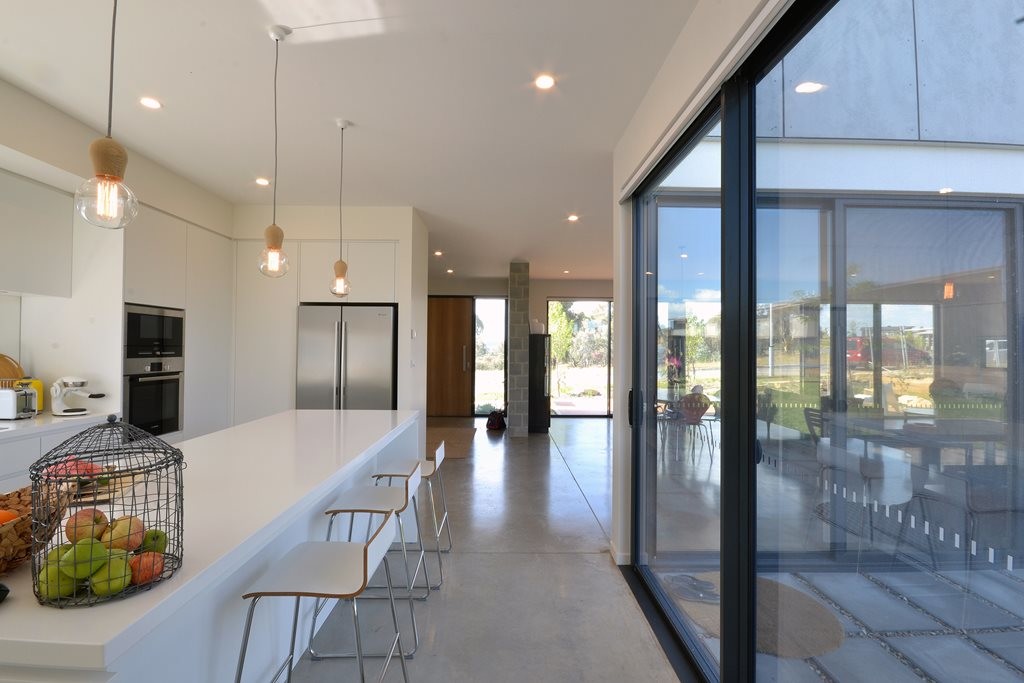Heated floors offer benefits beyond foot comfort. They keep entry and bathroom floors dry, are completely silent, can reduce heating bills and are an allergen free type of heating—a relief for Asthma suffers.
The most common systems of floor heating seen in Australia are electric and hydronic (hot water), both have their benefits and both function by providing radiant heat transfer from the floor to a room.
Beyond the radiant heat provided by floor heating, the system also works on the principle of convection, meaning natural air circulation will see warm air rise from the floor to the rest of the room. Having your floor heated can also eliminate it as one of the major sources for heat loss in a building.
Both electric and hydronic systems are installed in either a wet or dry installation—either within the concrete mix of a floor slab or the screed layer below tiles and carpet, or fixed to floor joists or under battened out timber floors.
ELECTRIC RADIANT HEATING

Electric radiant floors typically consist of electric cables built into the floor in strings, mesh and mats, and as the name suggests, radiant heat is provided by electricity that passes through the resistance electrical cables.
Electric heated floors are cheaper and easier than Hydronic to install but are expensive to run and are usually only cost effective in a situation where the floor has significant thermal mass and the electricity provider offers time-of-use electricity rates.
If the floor’s mass is large enough it can store enough heat when the electricity is cheap to carry it’s warmth throughout peak electricity tariffs.
^Electric radiant heating is easy to install and is more commonly used to retrofit a single room—especially a bathroom or kitchen—in an older house or building.
HYDRONIC RADIANT HEATING
 Ben Walker Architects used an in-slab hydronic heating system for OS House in Canberra. They say it provides a comfortable radiant heat source that can be turned on when required if the slab has not received sufficient natural daylight for a period of time.
Ben Walker Architects used an in-slab hydronic heating system for OS House in Canberra. They say it provides a comfortable radiant heat source that can be turned on when required if the slab has not received sufficient natural daylight for a period of time.
Hydronic is fast becoming the dominant type of floor heating in new homes especially with the popularity of polished concrete floors. The radiant heat for this system is provided by heated water that passes through pipes which circulate the floor. The water is heated in a boiler and directed at low pressure throughout pipes that are set in, above or below the floor.
The major benefit of hydronic heating is that the boiler used for heating the water can be powered by energy efficient and environmental means such as natural gas, LPG, solar and even geothermal heat pumps.
Hydronic systems are more expensive than electric systems to install and most commonly used for in-slab applications. They are also more complex systems that can run the risk of rupturing, allowing liquid seepage into the slab.
IMPORTANT CONSIDERATIONS
-
If an in-slab system is used and the new floor is not on solid earth, consider additional floor supports because of the added weight from water filled pipes and cables.
-
Suspended concrete slabs above a subfloor (not above a habitable room or another dwelling) with an in-slab heating system should have both under-slab and slab-edge insulation to reduce loss of heat from the heated slab.
-
Carpets and rugs can go over a heated floor, but they act as insulators.
-
Solid wood floors will dry and shrink when heated so moisture content of the wood should be tested before specifying a type of floor heating.
Images:
-
Frederick Suen wordpress
-
Ben Walker

